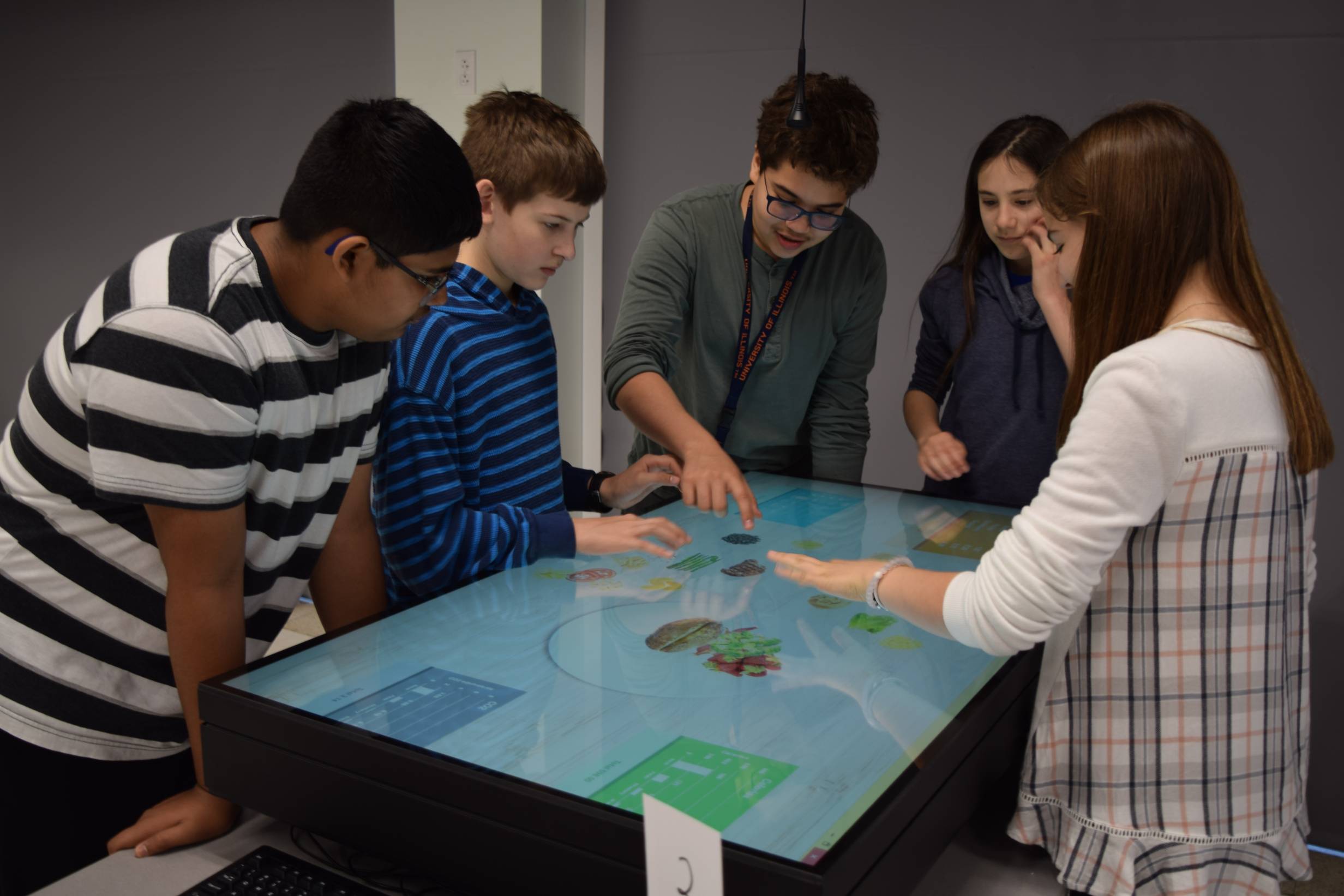Technology plays an important role in the day-to-day lives of nearly everyone on the planet. When created and used thoughtfully, technology can be incredibly engaging, especially for children. With the advent of smart phones and tablets have come educational apps and a call for an increase in the use of technology in classrooms. When teachers use technology in the classroom, students have the potential to more readily learn and grasp complex concepts and lessons. One assistant professor at the University of Illinois at Urbana-Champaign created an app to do just that.
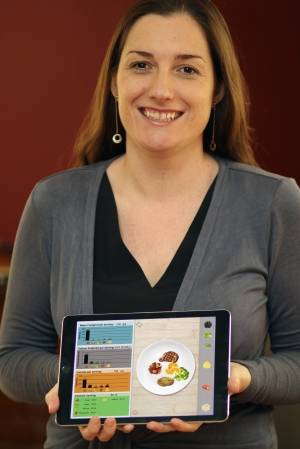 Emma Mercier, an assistant professor in the Department of Education at the U of I, became interested how children learn from each other while growing up in Ireland. She attended a small school in which children from elementary school to middle school were taught in the same room. “When you have children learning together in one room with that many ages represented, they are forced to teach each other and learn collaboratively,” says Mercier. She continued to cultivate this interest while pursuing her graduate degree at Stanford University, where she studied how to use technology to enhance learning in classrooms, and at Durham University in Northern England where she used touch tables to learn about how teachers can use technology to encourage children to work together in the classroom. A key takeaway from her time at Durham was that touchscreen technology, more than a computer screen, keyboard, and mouse, allows children to work together to access the same content. In classrooms with large age differences or learning abilities, learning via touchscreen can go a long way in closing gaps between peers.
Emma Mercier, an assistant professor in the Department of Education at the U of I, became interested how children learn from each other while growing up in Ireland. She attended a small school in which children from elementary school to middle school were taught in the same room. “When you have children learning together in one room with that many ages represented, they are forced to teach each other and learn collaboratively,” says Mercier. She continued to cultivate this interest while pursuing her graduate degree at Stanford University, where she studied how to use technology to enhance learning in classrooms, and at Durham University in Northern England where she used touch tables to learn about how teachers can use technology to encourage children to work together in the classroom. A key takeaway from her time at Durham was that touchscreen technology, more than a computer screen, keyboard, and mouse, allows children to work together to access the same content. In classrooms with large age differences or learning abilities, learning via touchscreen can go a long way in closing gaps between peers.
For the past two years, Mercier has harnessed this interest into learning about how to use apps to teach middle school students about real-world issues, such as climate change, while also ensuring that they are achieving traditional and fundamental learning standards, such as data & graph interpretation. In conjunction with University Laboratory High School (Uni High) and many others at the U of I, Mercier’s app was tested and approved. Last month, Food for Thought was released in the Apple App Store as an education tool with which to teach middle school aged children about those very issues.
When a user opens Food for Thought they are presented with an empty plate and about 24 foods. The plate can then be filled with any combination of 8 food items to create a full meal of breakfast, lunch, dinner, or whatever the user desires. As they add items, four graphs to the left of the screen illustrate the effect of teach food item on the environment, from the water used in its production, CO2 emissions caused in production, calories per serving, and cost per serving. Students can use the graphs to make smarter food choices, for the world and themselves.
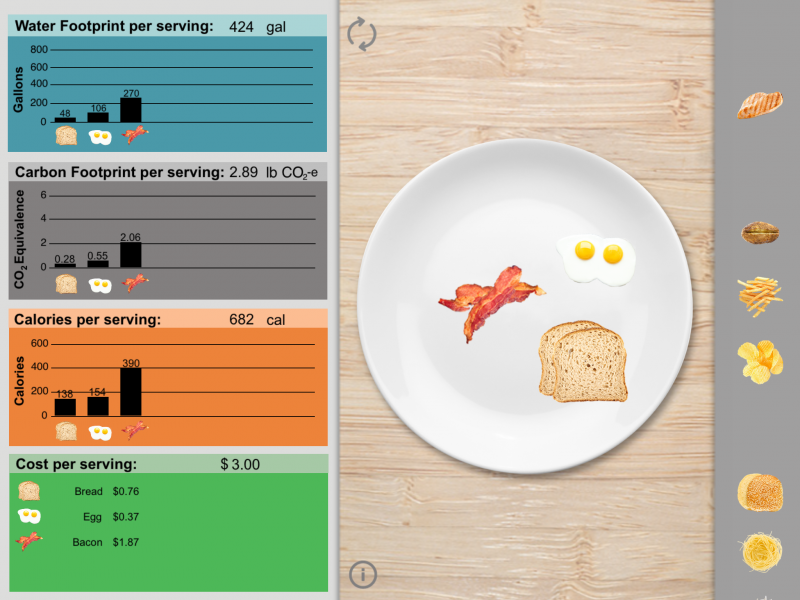
While making a plate in the app one can learn that, compared to asparagus, broccoli is better for the environment, your health, and your wallet. It takes more water to produce asparagus, and its production releases more CO2 than broccoli. A serving of broccoli contains fewer calories, and in our area, is 50 cents cheaper than a serving of asparagus.
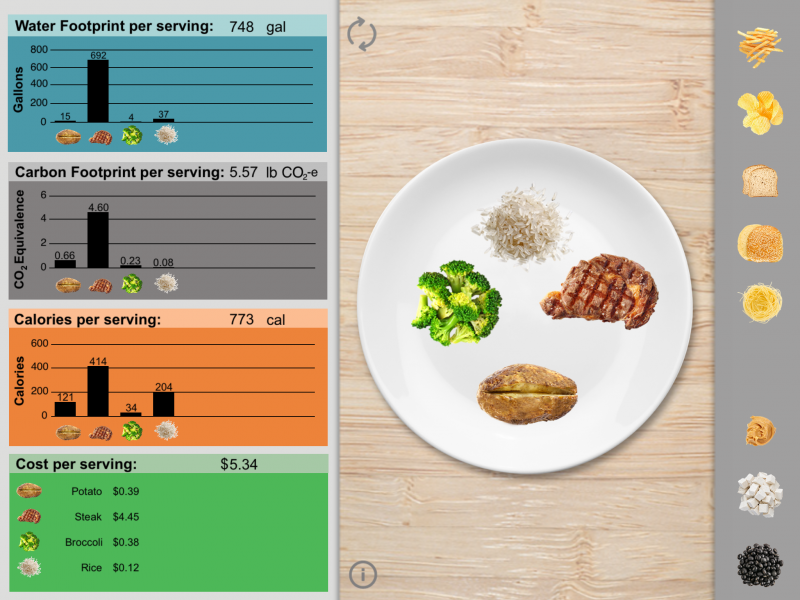
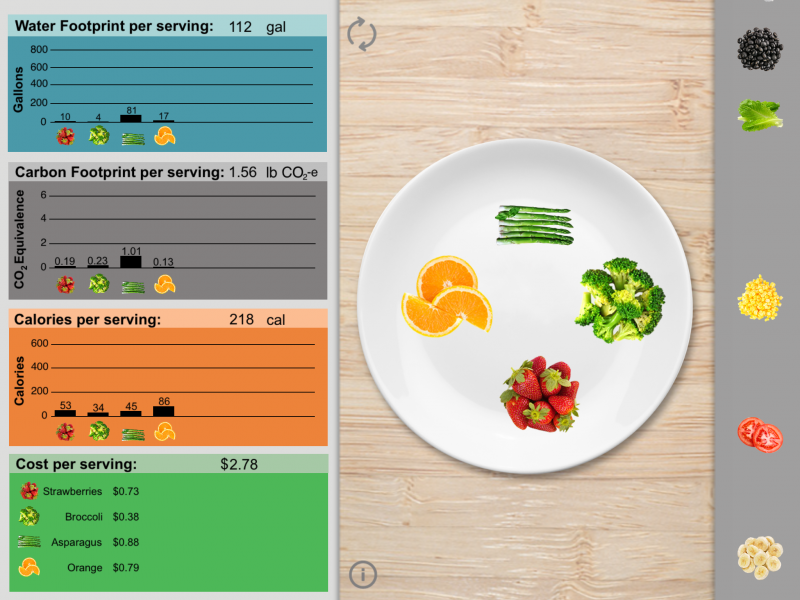
While designing the app, Mercier asked herself, “What do students struggle to learn year after year? And how can we present that information in a new way?” Apps in the classroom are only useful, says Mercier, if they are integrated into lesson plans in order to enhance learning, rather than as a replacement for a textbook. Apps like Mercier’s can help students who struggle to learn with traditional lesson plans and create more equitable learning environments. In addition, the app presents students with a lot of information, while being simple enough to give teachers the freedom to be creative and design a variety of lessons. With Food for Thought the teacher remains central to the discussion. More than anything, Mercier hopes the app helps spark conversations in the classroom. After just a couple of uses, Uni High students were telling Mercier that they had changed their eating choices, even as simply as ordering chicken instead of beef while out to eat.
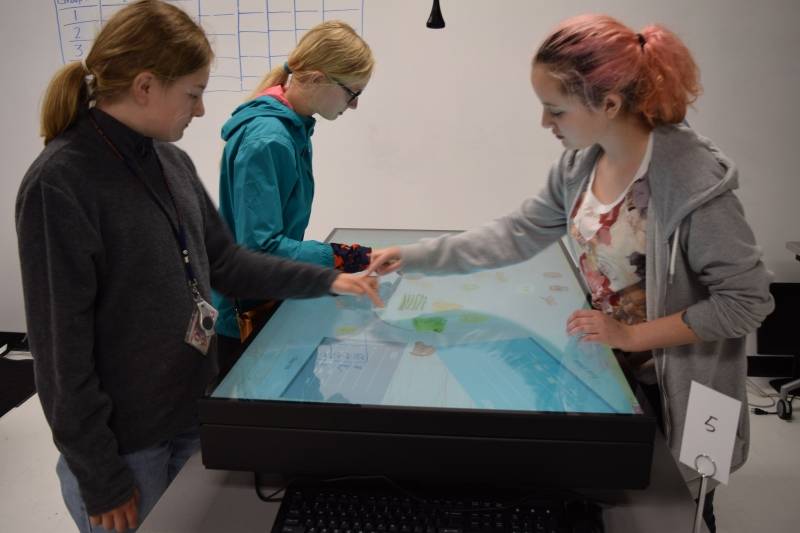
In no way is Mercier advocating for middle school age students to count their calories or give up red meat (a key contributor to CO2 emissions). The goal of Food for Thought is to teach children about how their everyday decision-making influences the environment. It can be very easy to take on a topic like climate change and become overwhelmed in regards to its complexity, magnitude, and often, the depressing implications. It can be hard for someone in East Central Illinois to care about polar ice caps melting thousands of miles away, and even if you do care, it can be hard to understand how you can help. The brilliance behind Food for Thought is that it allows children to engage with a very complex topic (climate change), make sense of multiple forms of data (calories, CO2 emissions, water footprints, and cost per serving), while also giving them a sense of agency regarding the choices they make and how those choices impact the world around them. Children are all about food, and it’s something that they can make decisions about, for the most part without the guidance of an adult. And if a 13 year old is going to make unhealthy eating decisions, they can at least look at how fries compare to potato chips or to a baked potato. If you’re going to make an unhealthy choice, make an educated one.
In the future, Mercier hopes to expand the app while still ensuring that the content is accessible to a variety of learners. In order to further demonstrate the environmental impact of our food choices, Mercier would like to someday allow students to compare the effects that foods from different sources have on the environment (i.e. food produced by large chain corporations, organic farms, and farm-to-table). For now though, Mercier is excited to see how people use and learn from the app. With so many possibilities for adaption of use, Food for Thought represents an important way in for teachers and students to grasp climate change, learn together, and understand how their decision making influences the world around them.
Photos courtesy of Emma Mercier.








